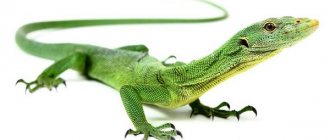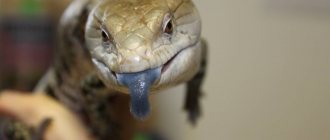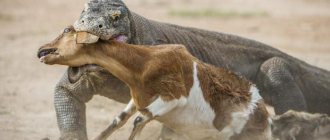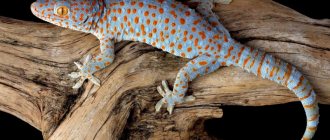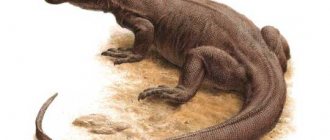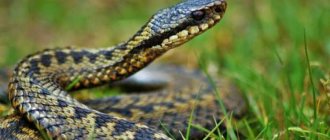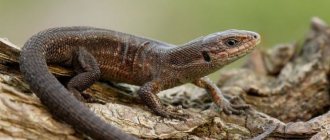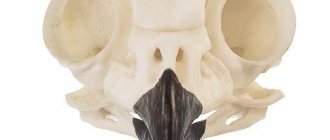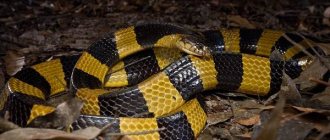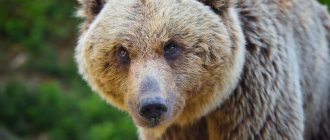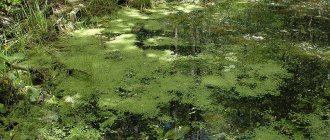Description of lizards
Lizards live in forests, on rocks, in deserts, in mountains, etc. They have a scaly cover and breathe only through their lungs. Lizards come in a variety of colors from gray to dark brown. On average, the size of these reptiles varies from 20 to 40 cm, but there are also small species of lizards called foot-and-mouth lizards and their size reaches up to 10 cm, and the smallest representative is the South American gecko measuring up to 4 cm.
There are also larger species of lizards - the Pearl, whose size reaches up to 80 cm, and the Colorado Dragon, which is the largest representative, whose size reaches about three meters.
The main distinguishing feature of lizards is the presence of a movable eyelid, unlike snakes, which have fused eyelids. There is also a second feature of lizards - the ability to throw off their tail in times of danger, as bait.
Due to the fact that lizards do not have vocal cords, they cannot hiss, that is, they are silent. Lizards moult several times a year.
Marine iguana
The marine iguana (Amblyrhynchus cristatu) is a species of lizard found only in the Galapagos Islands of Ecuador, with each island home to marine iguanas of varying sizes and shapes. Recently, their populations have been under threat due to the large number of predators that feed on lizards and their eggs. Marine iguanas are marine reptiles that are often called ugly and disgusting due to their appearance. Contrary to their fierce appearance, marine iguanas are gentle. Their color is mainly black soot. Their long, flattened tail helps them swim, and their flat, sharp claws allow them to cling to rocks in the event of strong currents. Marine iguanas often sneeze to clear salt from their nostrils. In addition to sneezing, they have special glands that secrete excess salt.
Lizard nutrition
Lizards feed on a variety of foods. Some eat insects, and some eat plant foods. There is also a species of lizards that feed exclusively on berries.
But large-sized lizards feed on rodents and some types of reptiles.
Lesser belttail
Lesser belt-tailed snakes (Cordylus cataphractus) live in desert and semi-desert areas. They are mainly found along the west coast of South Africa. The lizards were used in the pet trade for a long time until they became endangered. The color of the lesser belttail is either light brown or dark brown, and the lower part of the body is yellow with dark stripes. They are diurnal reptiles that feed on small invertebrates, plants, and other types of small lizards and rodents. If the lizard senses danger, it inserts its tail into its mouth to form a spherical shape that allows it to roll. This form exposes the spines on its back, protecting the lesser belttail from predators.
Lizards located in the vicinity of Moscow
There are a large number of different species of lizards that live in the Moscow region. Let's look at some of them.
Brittle spindle - this type of lizard has no legs and is very often confused with a snake. It lives in thickets of bushes or forests. This reptile feeds on insects and worms.
The main distinguishing characteristic from snakes is the movable eyelid and even scales throughout the body. The coloring of juveniles and adults is different. Juveniles are silver or golden in color, while adults are dark brown.
Viviparous lizard - likes to be in damp places. In the Moscow region they wake up from hibernation in mid-April.
The fast lizard loves to be in sandy places most of all, so it is easy to see in gardens, meadows, and clearings.
Wild reptiles
Among the lizards living in the wild are:
The fast lizard comes in gray, green and brown colors and can throw off its tail. Small animals are very dexterous and quick, and can eat their own offspring.
The proboscis anole is a rare species of nocturnal lizard that resembles a crocodile due to its long, elephant-like nose. Reptiles are light green or brown-green in color.
Worm-shaped lizard - a reptile similar to an earthworm; there are no limbs on the animal’s body. It crawls along the ground, its eyes hidden under the skin.
The Komodo dragon is the largest reptile, reaching a mass of 60 kg and a length of 2.5 meters. The lizard's bite is poisonous and can lead to dire consequences.
The tree agama is a lizard that climbs trees thanks to its sharp claws and tenacious paws. The body of reptiles is gray or olive in color, the tail is yellow-gray.
The current gecko is a lizard with a strong body that is covered with gray and blue scales. Individuals grow up to 30 cm, feed on insects and small vertebrate animals.
Bengal monitor
The Bengal monitor lizard is a massive and slender animal of gray-olive color, growing up to 1.5 meters in length. The lizard can swim and dive for 15 minutes.
Agama Mwanza
Agama Mwanza is a gregarious lizard with a long tail and an unusual color: half of the body is covered with blue scales, the other with pink or orange.
Moloch
Moloch is a specialist in camouflage. The lizard has a brown or sand-colored body that can change color depending on the weather.
Photos of lizards
Komodo dragon
The Komodo dragon (Varanus komodoensis) is the largest known species of lizard. They live on the Indonesian islands of Komodo, Rinca, Flores and Gili Motang. Mature monitor lizards weigh on average 70 kg and are about 3 meters long. Komodo dragons ambush a variety of prey, including birds, invertebrates, small mammals, and in rare cases, humans. Its bite is poisonous. The protein venom they inject when they bite can cause victims to lose consciousness, low blood pressure, muscle paralysis and hypothermia. Komodo dragons breed from May to August, and females lay eggs between August and September.
Lobe-tailed gecko
The lobe-tailed gecko (Ptychozoon kuhli) is found in Asia, especially India, Indonesia, Southern Thailand and Singapore. They have unusual leathery growths on the sides of their bodies and webbed feet. They feed on crickets, waxworms and mealworms. These are nocturnal reptiles. Males are very territorial and difficult to cage. They camouflage themselves under the bark of trees, which helps them avoid predators. Lobe-tailed geckos live inside trees and jump from branch to branch, especially when they sense danger.
Social structure and reproduction
Photo: Animal frilled lizard
Frilled lizards do not form pairs or groups. They unite and communicate during mating season. Males and females have their own territories, which they jealously guard. Violation of property is suppressed. Like everything in the life of a frilled lizard, reproduction is a seasonal process. Mating occurs after the end of the dry season and lasts quite a long time. Three months from October to December are allotted for courtship, fighting for females and laying eggs.
Chlamydosaurus kingii takes a long time to prepare for the mating season. Lizards eat and accumulate subcutaneous deposits during the rainy season. Males use their cloaks for courtship. During the mating period, their color becomes much brighter. Having won the attention of the female, the male begins courtship. A ritual nod of the head invites a potential partner to mate. The female herself decides to answer or refuse the male. The signal for mating is given by the female.
Egg laying takes place during the monsoon season. There are no more than 20 eggs in a clutch. The minimum known clutch is 5 eggs. Females dig holes about 15 cm deep in a dry place well warmed by the sun. After laying, the hole with eggs is carefully buried and camouflaged. Incubation lasts from 90 to 110 days.
The sex of the future offspring is determined by the ambient temperature. At higher temperatures, females are born, at average temperatures – up to 35 C – lizards of both sexes. Young lizards reach sexual maturity by 18 months.
Links[edit]
- Hammerson GA, Moroz DR, Gadsden H (2007). Phrynosoma mcallii
. IUCN Red List of Threatened Species DOI: 10.2305/IUCN.UK.2007.RLTS.T64077A12733969.en - ^ abcd Rorabaugh, James S.; Palermo, Caroline L.; Dunn, Stephen S. (March 1987). "Distribution and relative abundance of flat-horned lizards ( Phrynosoma mcallii
) in Arizona."
Southwestern Naturalist
.
32
(1): 103. JSTOR 3672014. - ^ a b c d f Sherbrooke, Wade S. (2003). Introduction to the Horned Lizards of North America. London: University of California Press. pp. 117–121. ISBN 9780520926752.
- Beolen, Beau; Watkins, Michael; Grayson, Michael (2011). Dictionary of Reptile Eponyms
.
Baltimore: Johns Hopkins University Press. xiii + 296 pp. ISBN 978-1-4214-0135-5. ( Phrynosoma mcallii
, p. 172). - "Phrynosoma mcallii - Horned flat-tailed lizard". Californiaherps.com. Retrieved September 25, 2011.
- ^ a b Turner, Frederick B.; Medica, Philip A. (December 21, 1982). "Distribution and abundance of flat-horned lizards ( Phrynosoma mcallii
)".
Kopeya
.
4
(4):815–823. DOI: 10.2307/1444091. JSTOR 1444091. CS1 maint: uses the authors parameter (link) - Burrows, Cameron W.; Allen, Michael F. (September 2009). "Species conservation in fragmented habitats: population dynamics of the flat-horned lizard, Phrynosoma mcallii
."
Southwestern Naturalist
.
54
(3):307–316. DOI: 10.1894/wd-22.1.CS1 maint: uses the authors parameter (link)
Parson's Chameleon
Parson's chameleon (Calumma Parsonii) is the largest chameleon in the world by mass. It is found in the tropical forests of Madagascar. The large and triangular head has independently moving eyes. Males have two horny structures directed from the eyes to the nose. Females lay up to fifty eggs, which can incubate for up to 2 years. After hatching, young Parson's chameleons immediately become independent. Due to their unusual appearance, they are imported to other countries for pet keeping. However, most reptiles die during transport. Parson's chameleons are immobile animals that perform minimal movements only for feeding, drinking and mating.
Snakes
It is interesting that among snakes there are not so many poisonous ones - less than 15% of the total number of species, which currently amounts to more than 3,600 (in the fauna of Russia - about 80). However, people, as a rule, are distrustful of all legless reptiles. For many peoples, the image of a snake is present in mythological and folklore symbolism, sometimes personifying deceit, evil and death, and sometimes wisdom, nobility and healing. The biblical prince of darkness, Satan himself, taking the form of a serpent, seduced the ancestors of mankind in paradise. But in Greek mythology, the healer god Asclepius (among the Romans - Aesculapius) appears in the form of a serpent who saved the people from illness and death; he is depicted with a staff entwined with a snake. From this myth comes the emblem of medicine - a bowl shrouded in a snake, as well as the name of one of the types of snakes - the Aesculapian snake (rare and completely non-venomous).
Aesculapian snake
At first, the serpentine body shape probably arose as an adaptation to a burrowing lifestyle or to movement on loose soils, but it also turned out to be promising when moving in water and in dense vegetation. The characteristic gaze of snakes, which never blink, is the result of fused eyelids, which become transparent and protect the eyes in various conditions. And the forked tongue, constantly fluttering, is not a “sting”, but an organ of smell and touch that delivers chemical signals from the external environment to the oral cavity.
White Snake
Boa constrictors
Snakes are extremely diverse in lifestyle, behavior, size, pattern and color. The largest snakes are boa constrictors. They are not poisonous, but can be dangerous precisely because of their size and the way they hunt prey by squeezing their powerful body with rings. They retained the rudiments of their hind limbs in the form of small claws. Boas live in tropical and equatorial latitudes of both hemispheres.
Rainbow boa
Colubridae
The largest family of snakes is the colubrids, which for the most part are quite safe for humans, although there are also poisonous species among them. Most colubrids do not have poisonous glands and teeth, and those of them that have a poisonous apparatus (tiger snakes, boigs, arrow snakes, whip snakes, etc.) are not able to apply it to humans - their poisonous teeth are located in the depths of the mouth (posterior grooved snakes). Therefore, poisonous colubrids are able to bite only small animals that make up their diet, paralyzing the prey when swallowed. However, the largest of them, such as the boomslang, are sometimes deadly to humans.
Boomslang
Among the colubrids, there are interesting cases of a kind of protection through mimicry - “imitation” in color and pattern of non-venomous snakes by poisonous ones: these are some very beautiful king and milk snakes, like poisonous coral adders, which have a bright warning color.
King snakes can feed on other snakes
The most common representatives of colubrids in the fauna of Russia - the common and water snakes, as well as the common copperhead listed in the Red Book and several species of snakes - are absolutely non-poisonous. The tiger snake (not all individuals), which lives only in the Far East, can be poisonous.
Merman with prey
Sea snakes
Sea snakes are secondary aquatic viviparous animals, usually with a vertically flattened body and tail, and are extremely poisonous. The poison is used by them mainly to kill prey and acts instantly - otherwise the affected fish would have time to hide in the tight crevices of the coral thickets and become inaccessible to the snake.
Yellow-lipped flattail, sea snake
Poisonous
Venomous anterior sulcus snakes are represented by the families of adders, which include the above-mentioned sea snakes, and vipers, which also include the subfamily of rattlers. A complex poisonous apparatus with poisonous glands (modified salivary glands), long poisonous teeth, pierced by a canal and located in the front part of the mouth, as well as a complex system of bones that act as levers that bring the poisonous teeth into a vertical position when opening the mouth, provide them with the ability to attack on creatures larger than themselves (including people). Therefore, the poisonous apparatus is used by these snakes not only for obtaining food, but also for protection from enemies. However, snakes bite large animals and humans extremely reluctantly, only in case of a direct threat to their safety - the poison is saved for hunting.
Temple keffiyeh
Cobras
To warn about themselves, many poisonous snakes have various devices and signals, the first of which is a loud warning hiss. Everyone knows the threatening pose of the cobra, raising the front part of the body and unfolding the “hood”, which is stretched by moving apart several ribs. Moreover, on the dorsal side of the hood, many species have a pattern in the form of an eye or two eyes to scare away the enemy if he attacks from behind. Some species of cobras inject venom not only by biting, but also by spraying it through the canals of the poisonous teeth into the eyes of the enemy - such are the spitting (Southeast Asia) and African black-necked and collared cobras.
King Cobra
Asps
Coral adders usually have bright, highly visible warning colors and a pattern of red, black, yellow-green rings.
Ribbon coral adder
